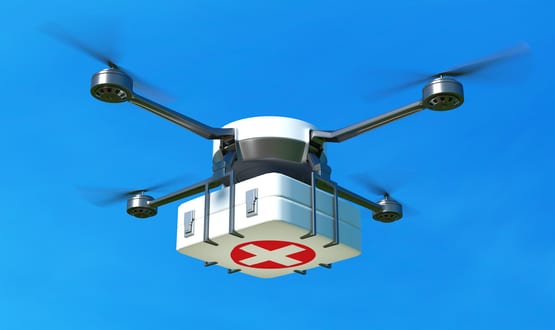Catching the EPR tide
- 6 January 2014

Northern Lincolnshire and Goole NHS Foundation Trust has an electronic patient record project that began to take shape a couple of years ago in a most unlikely place.
Karen Wilson, the trust’s assistant director of operations and EPR lead, lives a five minute walk from Grimsby Hospital.
And it was in her lounge – with the help of health records manager Lynn Frith, a flip chart, a few marker pens and her cat – that the EPR project saw the light of day.
Building up a portal
Naturally, things have both moved on and become more technical since then. The EPR is being developed from a portal that the trust developed, known as WebV, which is built on the InterSystems cache database.
The portal started life as a pathology and order communications system in 2002 and is very well liked. It started to expand after clinicians flagged that they sorely needed a new pathology results system.
“We thought we were going to go down a road of bringing in an EPR from the proprietor market,” says Wilson. “But at the same time, we were doing this work with our WebV team, which was developing a clinical portal.
“That work has progressed really well and that system was already accepted by our staff, so we have got really good buy in from them for the system.
“That made the team ask themselves: ‘Could we develop our own EPR?’ The answer they came up with was ‘yes’, and the project was off the ground.”
Getting clinical leadership
There are three main strands to the project: clinical, technical and operational. Wilson says it is a clinically led project, because it is the staff on the ground who decide what should happen.
Consequently, as well as an EPR project board – which has members from HR, a union, information governance, clinical safety, and informatics – the trust has set up different work streams with clinical involvement.
One of them is currently working on nursing documentation. “We have a nursing documentation group that’s transforming all the nursing documentation into electronic form, and it’s led by senior nurses,” says Wilson, who is a nurse herself.
“As well as having all of the medical information in there, we want to utilise the information to make sure we can do the right thing to the right patient at the right time, so we are putting in a numbers of flags and alerts on the system.”
Paper records are still the norm on the wards, but Paul Jackson, diagnostics and therapeutics IT manager, and another driver of the EPR project, says he hopes this will soon be a thing of the past.
“The process of digitising records have begun, but clinicians still take notes on paper and are writing manual notes for the record,” he says.
The trust is taking a staged approach to digitising records, rolling this part of the project out department by department.
“We do know that we’re not going to go ‘big bang’. We’re going to be doing this incrementally, and we’ve chosen three early implementers,” says Wilson.
“Once we understand how long the early implementers take, we can extrapolate that up to see how long it will take to completely roll out the system.”
Meanwhile, the trust has already created a created a patient observation system, and all National Early Warning Score (NEWS) observations now being recorded electronically at the bedside.
“Nursing handover is beginning to become electronic, we have electronic whiteboards on every ward, and in the next few weeks, we will be fully electronic with observations as we complete the roll out to maternity and paediatrics,” says Jackson.
Managing the transition
While the perils of ‘big bang’ IT implementations in the NHS are well known, digitising records one department at a time presents its own challenges. Frith says that managing both paper and electronic records is difficult.
“For me, the big challenge its managing paper records with electronic,” she says. “At what point do we stop doing the paper records?
“Ok, we start with new-born babies; they’re one of the early implementers. But what if that baby goes on the orthopaedic ward and they’re still paper based? What do we do then?” she asks.
Frith would really like not to create any more paper records, for practical reasons as much as clinical and safety ones. “We’re running out of space,” she says. “In the spring, we are due to go out to tender for new-born baby folders; I’m hoping we won’t have to do that.”
Still, the team keeps repeating that the most important thing is to make sure that everybody is ready for change. To prepare the organisation, it has run 11 road shows across all of the trust’s sites, to tell people about the EPR.
“They have been well received; it feels like the organisation is ready for a makeover,” says Wilson. “We’re starting a blog soon.
“What I want to do is not just make it the project lead blog; some of the work streams may have some key messages they want to share, and people can share their experiences. It’s a community blog around the project.”
Thinking outside the trust
The team is hoping that it won’t need a lot more formal training. “We’re building the system up to be easy to use; to be intuitive and to be easily accessible,” Wilson says.
“What we’re hoping is that – for the first time – we will have live, contemporaneous data rather than always being on the back foot.”
She adds that the trust is in the process of looking at a range of mobile devices that staff will use to get access to the system, including tablets, digital pens and voice recognition systems.
“We want people to have a degree of choice. We have agreed on a suite of devices that each department can choose from. We will let people have a feel and ‘play’ with the devices to see what devices work best for their department.”
The team has other big ideas. Jackson says that because WebV can ‘talk’ to any other system, and also interfaces with the trust’s patient administration system, it should be possible to use it to support the drive to integrate care across health and social care services.
“We’re looking at the potential to interface with GP practices through the MIG [the Medical Interoperability Gateway run by Healthcare Gateway]. We’ve had initial meetings with the suppliers, and it’s high up on the priority list,” he says.
Frith, meantime, is thinking about patients. “The project will never stop evolving. In our utopia world, once we’ve done the EPR we will create a patient portal,” she says. “At the moment, though, we’ve got nothing to put into the patient portal – so we need to develop the EPR first.”




